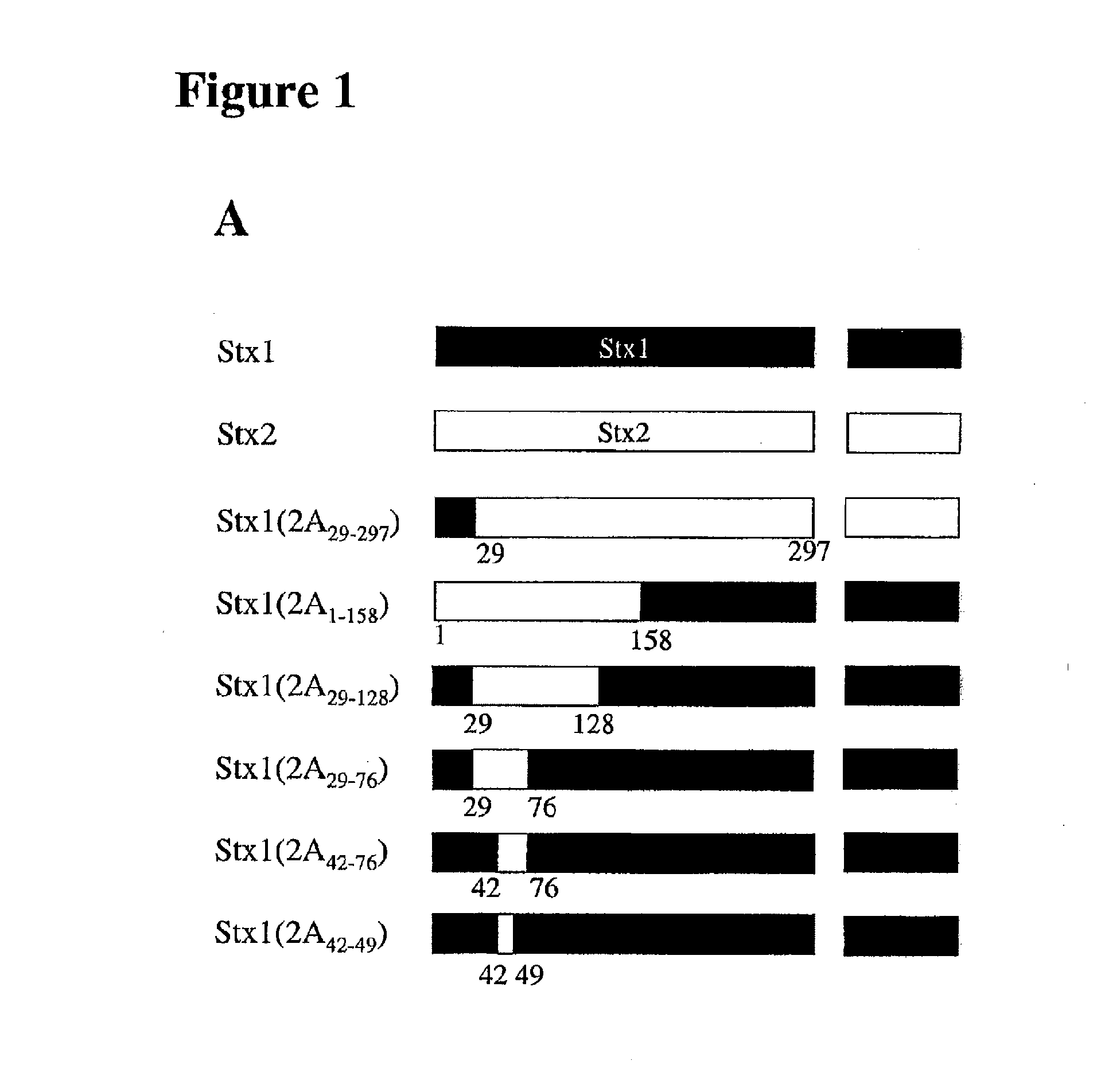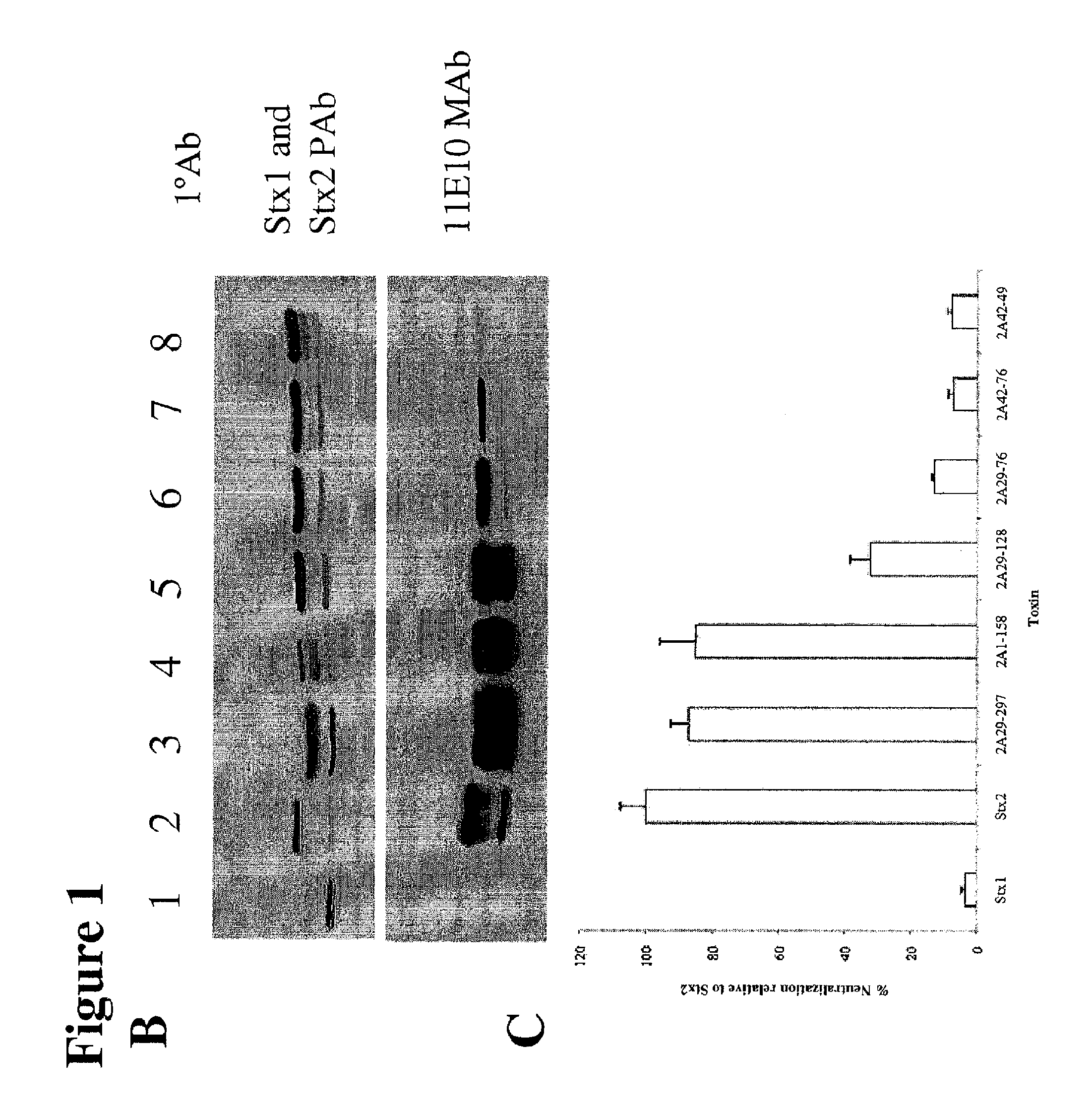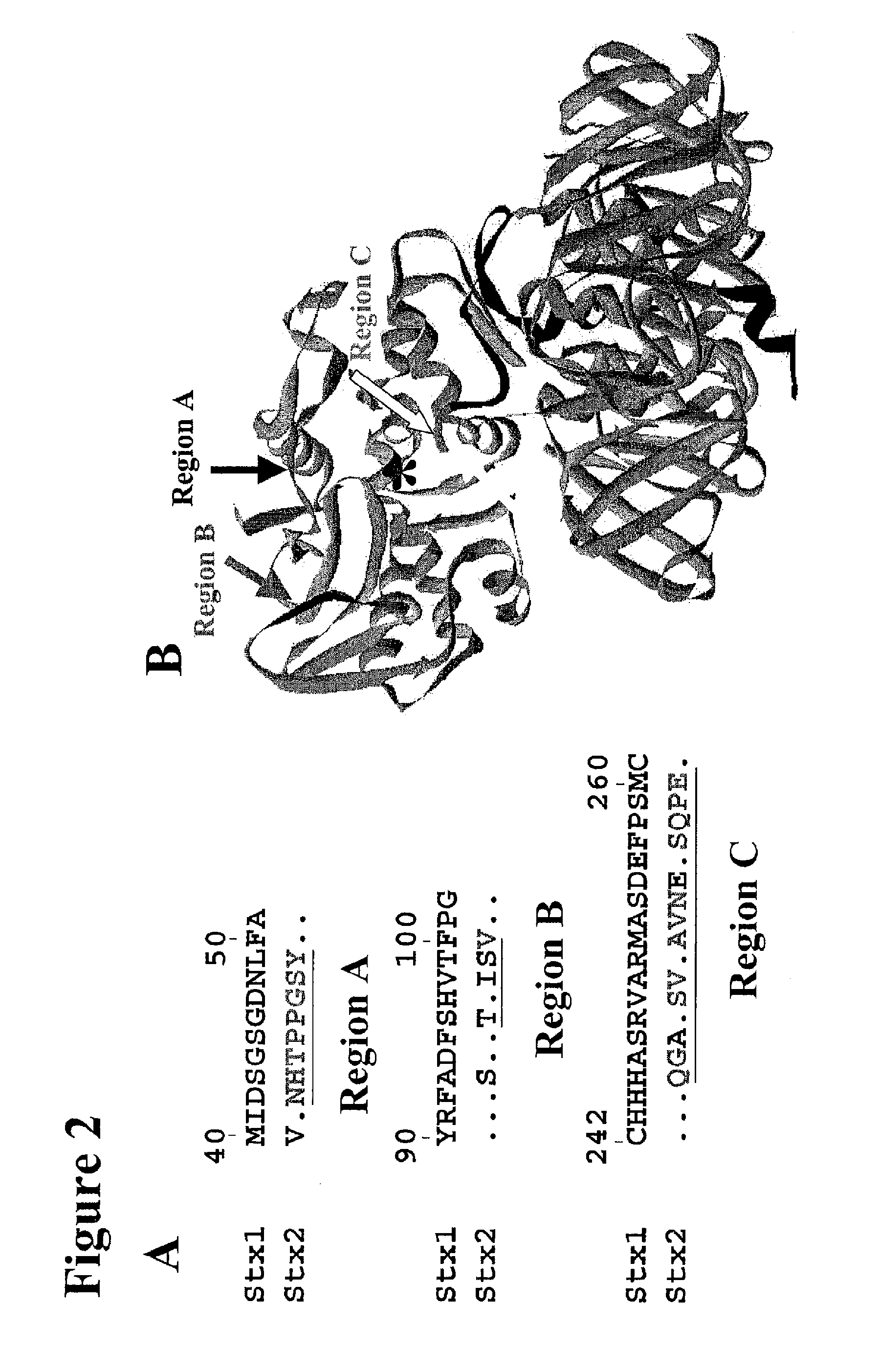Methods and compositions based on shiga toxin type 2 protein
a technology of toxin type 2 and composition, which is applied in the direction of peptide/protein ingredients, dna/rna fragmentation, depsipeptides, etc., can solve the problems of no known cure or vaccine for stx-mediated diseases, affecting the survival rate of patients, and affecting the effect of stx replication ra
- Summary
- Abstract
- Description
- Claims
- Application Information
AI Technical Summary
Benefits of technology
Problems solved by technology
Method used
Image
Examples
example 1
[0101]Monoclonal antibody 11E10 recognizes the A1 subunit of Stx2. The binding of 11E10 to Stx2 neutralizes both the cytotoxic and lethal activities of Stx2, but the monoclonal antibody does not bind to or neutralize Stx1 despite the 55% identity and 68% similarity in the amino acids of the mature A subunits. In this study, we sought to identify the segment(s) on Stx2 that constitutes the 11E10 epitope and to determine how recognition of that region by 11E10 leads to inactivation of the toxin. Toward those objectives, we generated a set of chimeric Stx1 / Stx2 molecules and then evaluated the capacity of 11E10 to recognize those hybrid toxins by Western blot analyses and to neutralize them in Vero cell cytotoxicity assays. We also compared the amino acid sequences and crystal structures of Stx1 and Stx2 for stretches of dissimilarity that might predict a binding epitope on Stx2 for 11E10. Through these assessments, we concluded that the 11E10 epitope is comprised of three noncontiguou...
PUM
| Property | Measurement | Unit |
|---|---|---|
| volume | aaaaa | aaaaa |
| volume | aaaaa | aaaaa |
| weight | aaaaa | aaaaa |
Abstract
Description
Claims
Application Information
 Login to View More
Login to View More - R&D
- Intellectual Property
- Life Sciences
- Materials
- Tech Scout
- Unparalleled Data Quality
- Higher Quality Content
- 60% Fewer Hallucinations
Browse by: Latest US Patents, China's latest patents, Technical Efficacy Thesaurus, Application Domain, Technology Topic, Popular Technical Reports.
© 2025 PatSnap. All rights reserved.Legal|Privacy policy|Modern Slavery Act Transparency Statement|Sitemap|About US| Contact US: help@patsnap.com



